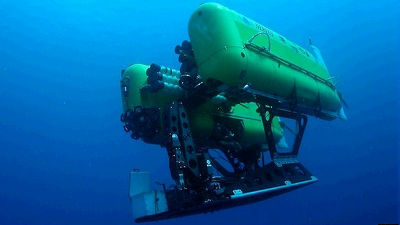Mysterious sounds coming from the Mariana Trench revealed

A mysterious sound collected during an acoustic survey in
Frontiers | Bryde's whales produce Biotwang calls, which occur seasonally in long-term acoustic recordings from the central and western North Pacific
https://www.frontiersin.org/journals/marine-science/articles/10.3389/fmars.2024.1394695/full
Creepy 'biotwang' noises coming from the Mariana Trench finally explained after 10 years | Live Science
https://www.livescience.com/animals/whales/mysterious-sound-coming-from-the-mariana-trench-has-finally-been-explained

The Mariana Trench is said to be the deepest ocean trench in the world, with a depth of over 10,000 meters, and various surveys have been conducted there, including by the Japanese unmanned submersible '
In 2014, an acoustic survey was conducted in the Mariana Trench. During the survey, a mysterious sound called 'Biotwang' was detected. Below is the actual sound of Biotwang detected.
Biotwang (Mariana trenches audio) - YouTube
Scientists were initially confused as to what the sound was, but in 2016 it was suggested that Biotwang may be the cry of a large whale, such as a blue whale or humpback whale .
However, the detected sounds did not match any known whale sounds, making it difficult to identify Biotowang.
So NOAA oceanographer Anne Allen and her colleagues converted Biotwang into a spectrogram, removed unwanted noise using a machine learning algorithm trained on more than 200,000 hours of audio, and compared Biotwang to audio data collected at monitoring stations throughout the Mariana Islands and surrounding areas to identify the source of the signal.
Analysis revealed that the biotwang was a sound made by a Bryde's whale .

By Jason Thompson
According to the research team, when they surveyed 10 Bryde's whales swimming near the Mariana Islands, nine of them made a unique sound that matched the biotwang. The research team's survey revealed that although Bryde's whales are distributed in oceans around the world with water temperatures above 20°C, biotwang has only been collected in the Northwest Pacific Ocean, and it was also identified that a specific group of Bryde's whales living near the Mariana Trench was making the biotwang.
The study also shows that the 2016 El Niño weather event warmed ocean temperatures, increasing the number of Bryde's whales visiting the area, resulting in a sharp increase in biotowang detections.
However, previous research has not clarified why Bryde's whales emit biotwangs. The research team said , 'Bryde's whales may use biotwangs to identify each other's locations, but further research is needed to explain this for sure.'
Related Posts:







